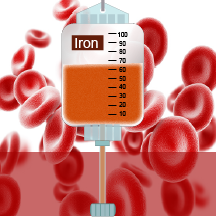Pain with sex, Intercourse pain, or dyspareunia, can cause problems in a woman’s life and it can be a cause of problems in couple’s sexual relationship. In addition to the physically painful sex, there is also the possibility of negative emotional effects. Then even when a woman may feel aroused and wanting sex, the fear of the pain can cause the whole process of wanting sex to stop.
How many people get Pain with Sex
It is estimated that about 20%-25% of women suffer vaginal pain with foreplay or intercourse. Pain can be acute, intermittent or chronic and can stem from a wide variety of causes that will be covered shortly. Unfortunately when women complaining of pain during sex, they are often dismissed as being inhibited, having psychiatric issues, or merely just making it up to get out of having sex. Many men would like to boast that it is them being well endowed that is causing the problem (they wish) but in fact if your partner is in pain, then you need to actually stop and listen to the reasons why. The fact is most of the time, their symptoms are related to legitimate medical issues that need to be investigated and treated accordingly. So guys, get your hand of it and start listening to your partner if she says she is getting pain.
What causes pain with Sex (Dyspareunia)?
In many cases, a woman can experience painful sex if there is not sufficient vaginal lubrication. There could be many reasons for this and one that is commonly seen in menopause. When this occurs, the pain can be resolved if the female becomes more relaxed, if the amount of foreplay is increased, or if the couple uses a sexual lubricant. Issues like this can easily be overcome, but there are some medical and gynaecological issues that could be causing the pain and being very much overlooked.
So what are the other causes of Pain with Sex?
Endometriosis – This is a condition in which the endometrial like tissue (lesions) that lines the uterus grows outside the uterus. It can cause all sort of pain in the pelvis, bowel and rest of the body, but it can cause pain with sex. It is one of the leading conditions that does cause pain with sex. Many women with endometriosis may not have symptoms of it, or may only have one symptoms like pain with sex. Symptoms do not correlate to the extent of the disease either. Some people with small amounts get lots of pain, while others can have lots of it and have no pain. Endometriosis can only be properly diagnosed via surgery (laparoscopy)
Adenomyosis – is a condition which is very similar to endometriosis. It is a conditions in which the inner lining of the uterus (the endometrium) breaks through the muscle wall of the uterus (the myometrium). Adenomyosis can cause menstrual cramps, lower abdominal pressure etc, before the menses and can result in heavy periods. It can also cause pain with sex. The condition can be located throughout the entire uterus, or localized in one spot
Vaginismus- This is a common condition. It involves an involuntary spasm in the vaginal muscles, which closes up the vagina and prevents penetration from happens. It is sometimes caused by fear of being hurt.
Pelvic Floor Hypertonus– Pelvic floor hypertonus occurs when the muscles in the pelvic floor become too tight and are unable to relax. Many women with an overly tight and non-relaxing pelvic floor experience pelvic health issues such as constipation, painful sex, urinary urgency, bladder issues and pelvic pain.
Vaginal Infections- These conditions are common and include yeast infections such as thrush and candida and these can cause inflammation to the vagina and cause pain with sex and also localized bleeding.
Vaginal skin conditions– Dermatitis around the vulva and also a condition called Lichen Sclerosis can all cause pain with sex due to the inflammation of the skin.
Atrophic Vaginitis – Atrophic vaginitis is a vaginal disorder that usually happens after menopause, but it can happen long before this time as well. When estrogen levels fall, the vaginal walls can become thin, dry, and inflamed. This then causes the surrounding tissue to lose its elasticity and become atrophied.
This can be uncomfortable and it can make sex uncomfortable, or extremely painful
Problems with the cervix (opening to the uterus) –In this case, the penis can reach the cervix at maximum penetration. So problems with the cervix (such as infections) can cause pain during deep penetration.
Problems with the uterus – These problems may include polyps, cysts, fibroids etc that can cause deep intercourse pain.
Problems with the ovaries – Problems might include cysts on the ovaries, or tubal disease.
Pelvic Inflammatory Disease (PID) – Often referred to as penis injected disease. With PID, the tissues deep inside become badly inflamed and the pressure of intercourse causes deep pain.
Ectopic Pregnancy – This is a pregnancy in which a fertilized egg develops outside the uterus, or into the tubes. It can cause immense pain and even death if not death with properly.
Menopause- With menopause, the vaginal lining can lose its normal moisture and tone and become dry. The vagina, uterus and surrounding organs can all suffer atrophy, which can cause bleeding and pain (see atrophic vaginitis above). It can also cause prolapse.
Intercourse too soon after childbirth, or surgery – Trying to have sex too soon after childbirth, or a surgery, can cause pain during sex.
Sexually Transmitted Infections (STI’s) – These may include chlamydia, genital warts (HPV), genital herpes, or other STI’s.
Injury to the vulva or vagina- These injuries may include a tear from childbirth or from a cut (episiotomy) made in the area of skin between the vagina and anus during labor.
How Can Painful Sex In Women Be Treated?
Some treatments for painful sex in women do not require medical treatment. For example, painful sex after pregnancy can be addressed by waiting at least six weeks after childbirth before having intercourse, or when a women feels she is ready again. Make sure to practice gentleness and patience.
In cases in which there is vaginal dryness, or a lack of lubrication,water-based lubricants will help. In the cases of some conditions such as menopause, topical estrogen creams may be needed to bring tone back into the vaginal wall, along with lubricants during sex.
Some of the conditions such as endometriosis, PID, fibroids, or trauma to the vagina and will require surgery and adjunct therapies such as hormones and other medications.
Other issues such as vaginal infections, bacterial infections, skin conditions, STI’s etc may just need medications such as antibiotics, antifungals, steroids and other medications for their treatment
Some conditions like vaginismus, or psychological traumas (sexual abuse), may require a person to see a counselor, psychologist, psychiatrist, or sex therapist.
There are also natural medicines such as Acupuncture, Chinese Herbal medicine, herbal supplements etc which may assist with pain, either on their own, or in combination with medical treatments and talk therapy
Final Word
If you do have pain with sex, you need to go and speak to your healthcare provider, or seek the help of a gynaecologist, or women’s health expert.
Pain with sex is not normal, and you need to find out the cause of these issues and not put it off. Many times there are non-invasive and easy treatments to help.
If you need help in finding out how to manage pain with sex, and the causes, please give my friendly staff a call to find out how I can assist you.
Regards
Andrew Orr
-No Stone Left Unturned
-Master of Women’s Health Medicine
-The Women’s Health Experts













